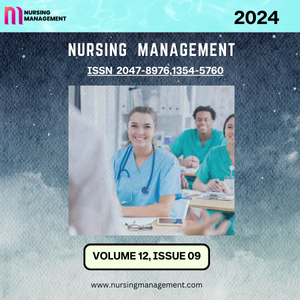Menu
Volume 12 Issue 9
Effectiveness of Virtual Reality for Managing Pain, Fear, and Anxiety in Children and Adolescents Undergoing Needle-Related Procedures: Systematic Review with Meta-Analysis
Rocío Cáceres-Matos,Mario Castillo-García,Eleonora Magni andManuel Pabón-Carrasco
1Faculty of Nursing, Physiotherapy and Podiatry, University of Seville, 41009 Seville, Spain
2CTS-1050 “Complex Care, Chronicity and Health Outcomes” Research Group, Universidad de Sevilla, 41009 Seville, Spain
3Institute of Biomedicine of Seville (IBiS), 41013 Seville, Spain
4CTS-969 “Care Innovation and Health Determinants” Research Group, Universidad de Sevilla, 41009 Seville, Spain
Author to whom correspondence should be addressed.
Abstract
The most frequently performed invasive procedures in hospitals and healthcare centers are needle-related procedures, such as intravenous cannulation and phlebotomy, and they are identified as the major sources of pain, fear, and anxiety in children and adolescents. The objective of this systematic review was to evaluate the effectiveness of VR as a distraction measure to reduce pain, fear, and anxiety in children and adolescents undergoing needle-related invasive procedures. For this purpose, the CINAHL, Scopus, WOS, and Cochrane Library scientific databases were used. The protocol review was registered in PROSPERO (ID:42024563245), and inclusion and exclusion criteria were applied. Twenty-one studies were included in the systematic review, involving a total of 2663 participants. Significant differences favored the use of virtual reality for the control of pain intensity (WBFSpatients p = 0.001; MD = −1.83; 95% CI −2.93 to −0.72; WBFSparents p = 0.0002; MD = −2.61; 95% CI −4.00 to −1.23; WBFSnurses p = 0.0001; MD = −2.71; 95% CI −2.82 to −2.60; VAS/NRS p = 0.001, MD = −0.71; 95% CI −1.13 to −0.28), anxiety (CAMpatient p = 0.02, MD = −2.92; 95% CI −5.45 to −0.38; CAMparents p = 0.01, MD = −3.87; 95% CI −6.99 to −0.75) and fear (CFSpatients p = 0.0005, MD = −1.27; 95% CI −1.99 to −0.56; CFSparents p = 0.0005, MD = −1.33; 95% CI −2.08 to −0.58; and CFSnurses p = 0.04, MD = −1.13; 95% CI −2.24 to −0.03). However, high heterogeneity was noted. The use of virtual reality as a distraction appears to be a valuable strategy for reducing pain, fear, and anxiety during needle-related procedures, although further studies with higher methodological rigor, based on a standardized protocol, are needed.
Keywords:
virtual reality; pain management; fear; anxiety; invasive procedure; adolescent; child; nursingEditorial Board
Editor-In-Chief
Christopher J. Hayes, University of California, BerkeleyCalifornia
Associate Editors
David P. Williams, Johns Hopkins University
Sophia L. Brooks, University of Sydney
Arjun K. Mehta, University of Cambridge
Isabella S. Johnson, University of Toronto
Eli T. Garcia, University of Oxford
Grace M. Lewis, Stanford University
Mason R. Chen, University of Melbourne

